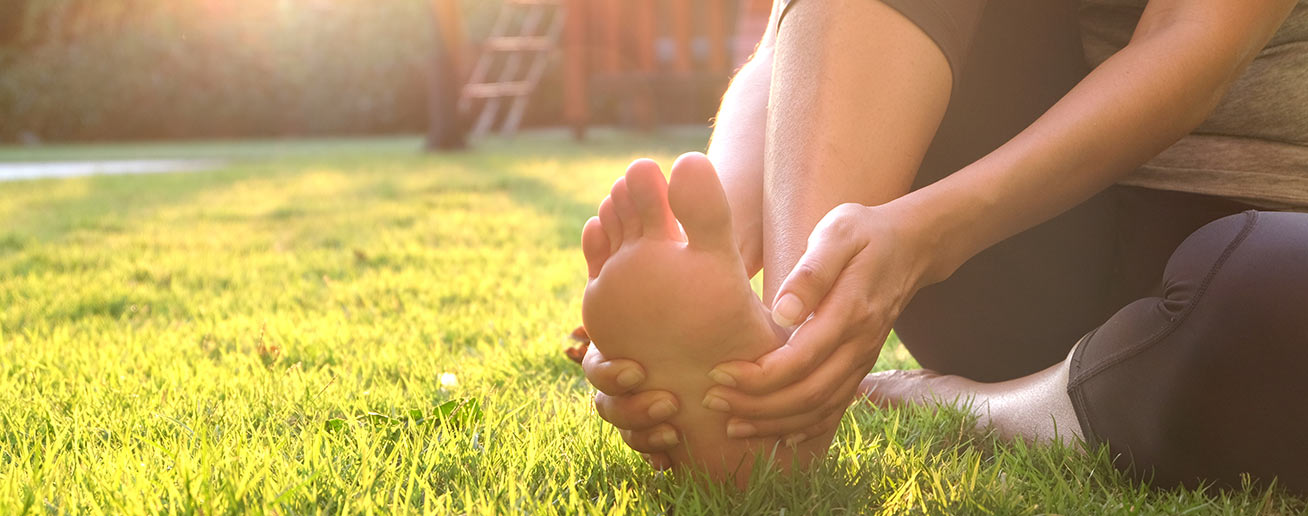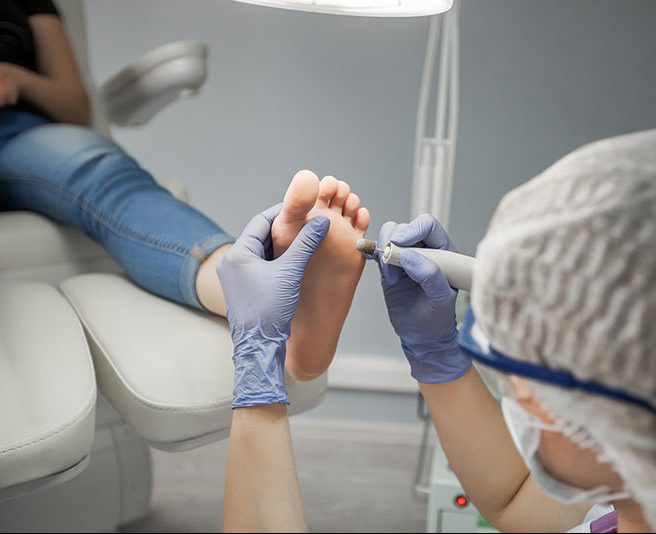
podiatry services
Podiatry is the word used to describe the branch of medicine concerned with the lower limb, particularly the foot and ankle. Podiatrists diagnose, treat and prevent foot problems using chemical, physical, mechanical and surgical therapies.
Our feet are probably the most neglected part of your body. Generally you take your feet for granted and it is not until problems occur that you may consider getting them checked. How often have you said to yourself “my feet are killing me”! Where as really you should be asking yourself “Am I killing my feet”? Don’t leave it too late. By looking after your feet now you will be able to live an active life doing the things you enjoy.
We deal with foot, skin and nail conditions, including:
Hard skin
Foot and nailcare
Fungal infections
Diabetic foot conditions
Diabetic foot Assessments
Peripheral vascular disease
Corns and callous
Athletes foot
In-growing toe nails
Heel pain
Verruca treatments

foot & nail care
We cover a wide array of general foot maintenance, such as correctly cutting, filing and reducing the thickness of the toe nails, removing areas of hard skin and providing advice on suitable products related to the overall care of your feet. This is increasingly important as we age or suffer reduced mobility as routine foot care becomes very difficult to perform ourselves.
calluses
Calluses are areas of thick yellowing skin on the feet which can make walking very painful. They typically occur on areas of the foot exposed to excessive pressure or friction – there can be a number of reasons for this but a typical situation would be poorly fitting shoes or the thinning of the fatty tissue under the ball of the foot.
corns
Corns often occur on weight bearing areas of the foot, or those areas experiencing high pressure. There are several types of corn under these different circumstances, some can be quite passive and cause little practical concern, whilst others can be extremely painful. Either way a corn is a symptom of a specific problem, something we can diagnose and treat appropriately.
fungal nail infection
A very common issue, fungal nail infection affects around 3 in every 100 people in the UK. Toenails can appear yellowy brown in colour and begin to crumble when infected. Although it’s not particularly painful at first, over time as the nails thicken pain can occur as more pressure is placed upon the nail bed.
athletes foot
Athletes foot is an infection caused by fungus which can appear in between the toes and on the feet. It can make the skin red, flaky and itchy and as the name suggests those playing regular sport are at particular risk. Whilst with treatment it can clear it up in a matter of days, if misdiagnosed the symptoms can persist for months if not years.
verrucas
Verrucas are a form of the Human Papiloma virus and are generally contracted at communal places such as swimming pools and changing areas. They are similar in appearance to corns, but have visible small black dots at their centre and can be quite painful. We offer two main types of verruca treatment;
Freezing (Cryotherapy)
Cryotherapy is a very safe process where we destroy the skin around the verruca by freezing it using nitrous oxide gas. The idea is to provide a short, sharp shock to your skin cells, which destroys the verruca tissue. This is a very straightforward procedure causing minimum disruption to our patients, although it can take several treatments before the verruca is finally eradicated.
Strong acid-based treatments
Acid-based treatments, which are much stronger than the over-the-counter remedies you can buy, are used to destroy the infected skin. Again, this treatment usually requires several sessions before the verruca is fully destroyed. The procedure is largely painless, although some people may feel a little discomfort in the treated verruca once the acid starts to work.
podiatric biomechanics
Podiatric biomechanics involves the assessment of the structure, alignment and function of the feet and legs. The foot is the only part of the human body which is unique to the human which is why we are able to walk upright. It has developed specifically so that it can adapt to the surface upon which we walk. In the early stages of our evolution, the terrain upon which we walked was varied and uneven and the foot has a complex set of joints and muscles which allow this process. However, we are now required to walk on hard, flat man-made surfaces subjecting the foot and legs to low-grade but repetitive movement.
The average person takes between 5,000 to 18,000 steps per day. This low-grade but repetitive motion can place stress on the foot, legs, pelvis and spine predisposing to pain and discomfort. If you have a low-arched (pronated) or high arched (supinated) foot then you may be more predisposed to problems. However, muscle inflexibility and weakness, footwear and activity levels can all affect function.
Detailed assessment of underlying structure and function can help to identify factors that may be causing or contributing to discomfort. The use of special shoe inserts (orthoses) can help to control the way in which the foot and therefore legs function and thus reduce discomfort. However, attention to shoes and muscle strength/flexibility can all improve function.

The name Chiropody was changed to Podiatry in 1993. Podiatry is the internationally recognised name for our profession. Podiatry is a constantly evolving profession, the extensive training given to students over the 3 or 4 years of their full time course and the continuing education after graduation ensures that podiatrists skills and knowledge are current.
Biomechanics is the study and analysis of gait and human movement. Podiatrists observe patients for any alterations in the optimum sequence of events between the foot, the lower limb, and the rest of the body during the walking (running, cycling, skiing etc) phase. Deviations from the optimum, can lead to heel pain, foot strain, ankle, knee, hip, lower back and neck pain.
A biomechanical assessment may indicate that you would benefit from wearing an orthotic. Orthotics are prescription insoles which stabilise the foot holding it in the ideal position. Repositioning the foot alters the angles at which the foot strikes the surface. Wearing orthotics can improve corns and calluses, ankle sprains and knee, hip and back pain.
Podiatrists treat sports injuries with various therapies; biomechanical assessment, orthotic prescription, muscle stretching exercises, strapping, advice for self-treatments. Where necessary, referrals are made to Physiotherapists, Osteopaths and Doctors.
Most commonly children require podiatric treatment for gait problems, verruca and ingrown toenails.
As a general rule of thumb our appointments for routine podiatry last around 30 minutes, but depending on your requirements or if you’re booking in for more detailed services such as biomechanics, you may require up to an hour or more. Either way, we’ll let you know when you make an appointment.
You’ll find that we’re covered by most major insurance companies as all of our podiatrists are registered with the Health and Care Professions Council and we’re also actively on a number of their referral lists.
As you can imagine different insurers tend to have different processes, some may require you to pay for your treatment in advance and allow you to claim the costs back via a payment receipt, whereas others will allow us to invoice them directly. We would always advise you check with your insurer before making an appointment but if you do have any questions or concerns please don’t hesitate to ask.
Payment is made at the end of each treatment session either by cash, cheque or credit / debit card.
